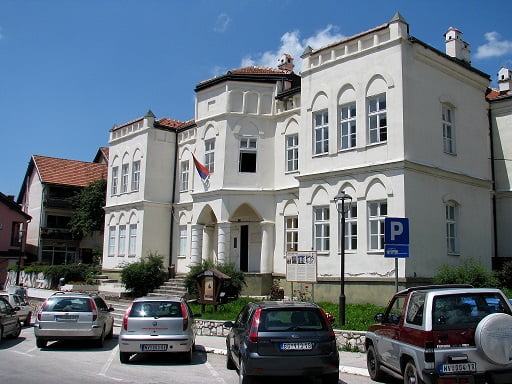
NOVA VAROS
The town in southwestern Serbia that is home to 16,500 inhabitants, half of whom live in rural areas. It has a good multicultural tradition. Nova Varos lies on the main road from Belgrade to Montenegro and it is situated beneath the Zlatar mountain, with the altitude about 1,000 meters.

Even though the town is not that big, it’s worth dedicating a whole day to strolling around. There is a lot to see here, especially if you love the geographical area of Stari Vlah – that stretches from borders with Bosnia and Montenegro to the Ovcar-Kablar gorge in Serbia – the region that was once the administrative part of the Rashka state, Serbian country founded by Stefan Nemanja in the 12th century. Nova Varos sprouted, they say, around the 16th century when it was important to secure the merchant caravans on the road from Constantinople. Here, you will be advised to start your visit with stopping by the Heritage Museum first, since this is where you will learn all the essentials about the history, locations to visit, Raskovic dynasty and the WWII commander Petar Bojovic’ birthplace. Among other things, the Raskovic’s 1560’s saber replica is to be seen here.

Houses around the main street date back to the beginning of the 20th century, while the town’s mosque and the church are built at the end of the 19th. The Museum itself is situated in the old building of the so-called kaymakamiya or the headquarters of the former district’s chief – the building that was extremely modern for the late 19th century when it was constructed. It represents a true decoration of the town’s center today reminiscent of the former wealth. If you continue strolling down the same street, you will come across other architect reminiscences of past times such as Music’s House, Armenian House or the Kulic’s House. Mister Pedo Korunovic was nice enough to show me the latter. As a descendent of the Kulic family, he says that they also had the Kulic Han before WWII and later the renowned hotel. This particular house was built in 1900 by totally natural materials. “Like they do in Sweden today”, my host says.
Archives
Calendar
| M | T | W | T | F | S | S |
|---|---|---|---|---|---|---|
| 1 | ||||||
| 2 | 3 | 4 | 5 | 6 | 7 | 8 |
| 9 | 10 | 11 | 12 | 13 | 14 | 15 |
| 16 | 17 | 18 | 19 | 20 | 21 | 22 |
| 23 | 24 | 25 | 26 | 27 | 28 | 29 |
| 30 | ||||||
Leave a Reply